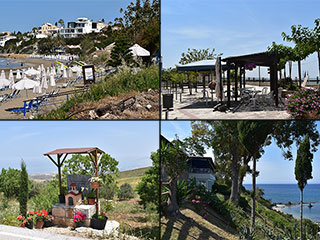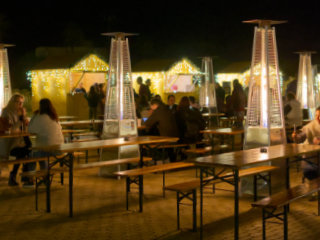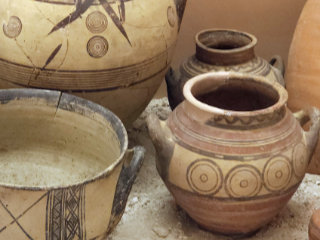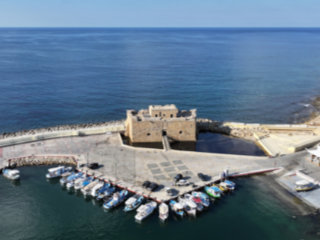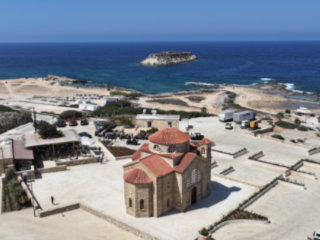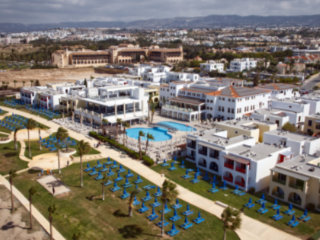The House of Dionysus
Return of the Map
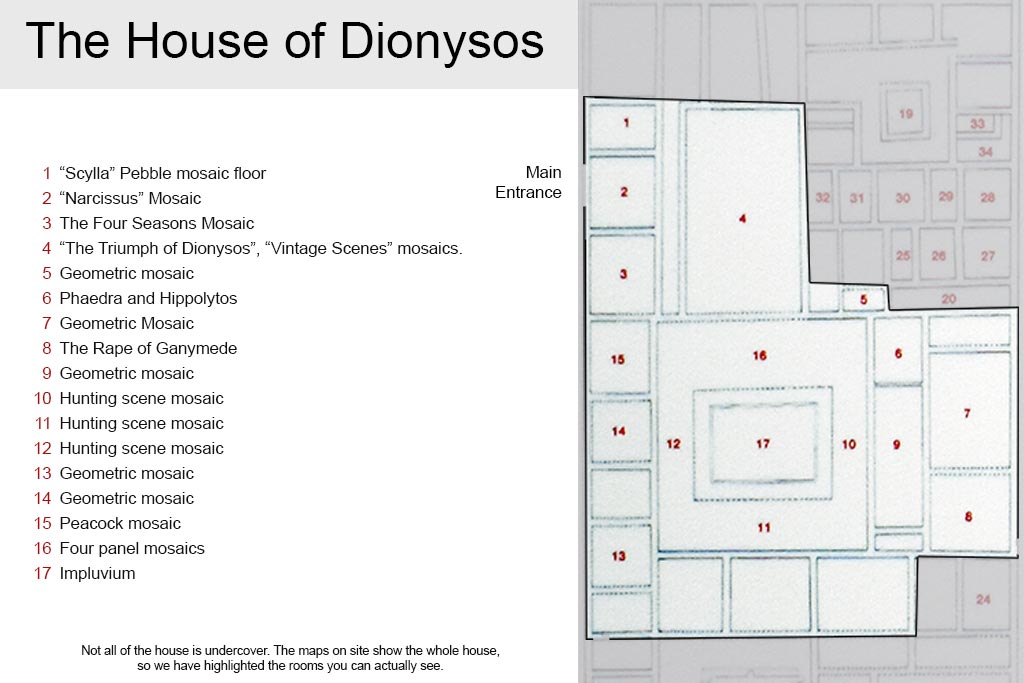
We are now on the far side of the covered area. A raised walkway crosses the floors from 6 to 9.

Geometric Mosaic
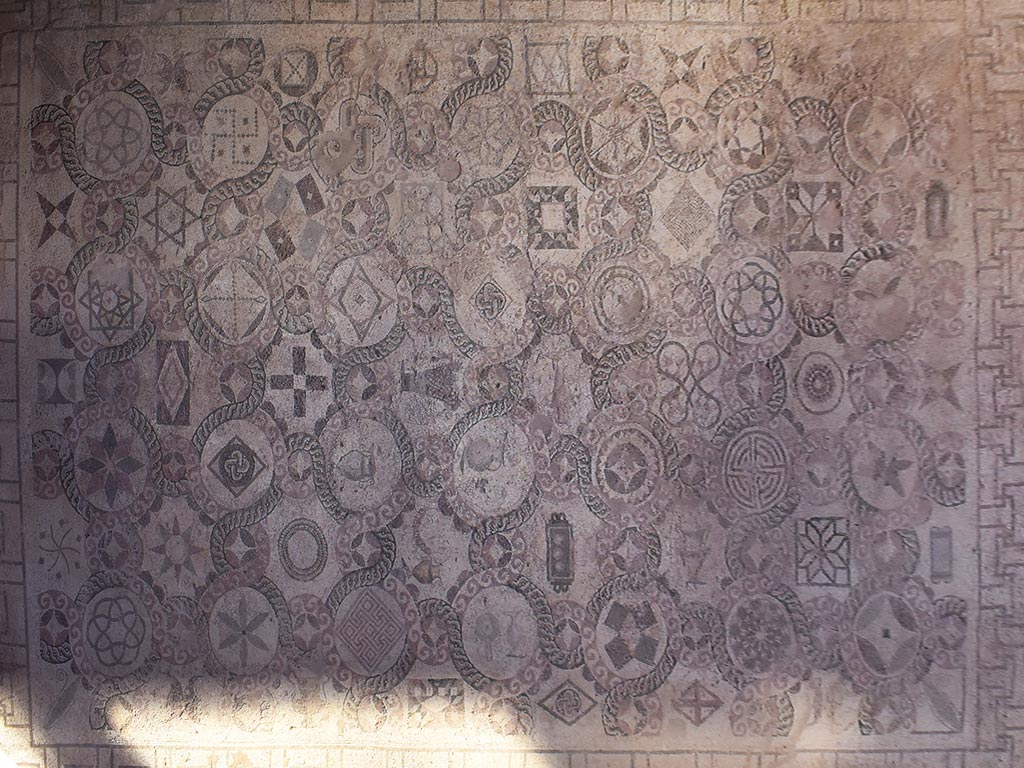
Room 7
Geometric Mosaic
Mosaic floor with geometric motifs and objects of everyday life.
Depending on when you visit it can be quite difficult to photograph the mosaics, as the sun shining in through the windows can blow out the detail. So if it is raining on your visit, at least you can get a better picture!
Speaking of pictures, if you go online you will see a lot of brightly coloured pictures of the mosaics, looking very vibrant. In reality they look like the pictures you see here. I imagine if you were to give them a rinse down they would look a lot more colourful until they dried, but don't go there expecting a sea of colour. They do look magnificent as they are, so you won't be disappointed. I just wanted to explain why these pictures might not look as colourful as other ones you can see.
The Rape of Ganymede
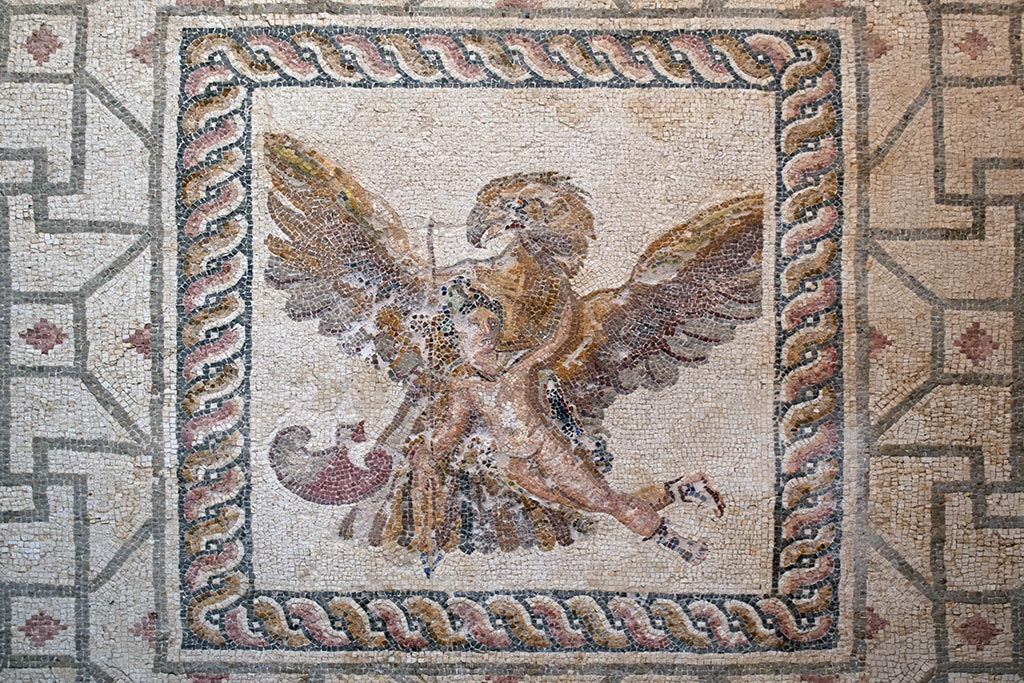
Room 8
The Rape of Ganymede
Representation of the mythological scene of the seizure of Ganymede. The god Zeus, having transformed into an eagle, carries Ganymede away.
There are numerous versions of the legend of Ganymede. The version listed in Wikipedia doesn't involve rape, but I am including it here because it matches the mosaic. The key takeaway, not obvious in the mosaic, is that Ganymede was a young man, not a young woman.
Ganymede was abducted by Zeus from Mount Ida near Troy in Phrygia.[21] Ganymede had been tending sheep, a rustic or humble pursuit characteristic of a hero's boyhood before his privileged status is revealed. Zeus either summoned an eagle or turned into an eagle himself to transport the youth to Mount Olympus.[22]
Roman-era relief depicting the eagle of Zeus abducting Ganymede, his Phrygian cap denoting an eastern origin, and a river god
On Olympus, Zeus granted him eternal youth and immortality and the office of cupbearer to the gods, in place of his daughter Hebe who was relieved of her duties as cupbearer upon her marriage to Herakles. Alternatively, the Iliad presents Hebe (and once Hephaestus) as the cupbearer of the gods with Ganymede acting as Zeus’s personal cupbearer.[23][24] Edmund Veckenstedt associated Ganymede with the genesis of the intoxicating drink mead, which had a traditional origin in Phrygia.[25] In some literature such as the Aeneid, Hera, Zeus's wife, regards Ganymede as a rival for her husband's affection.[26] In some traditions, Zeus later put Ganymede in the sky as the constellation Aquarius (the "water-carrier" or "cup-carrier"), which is adjacent to Aquila (the Eagle).[27] The largest moon of the planet Jupiter (named after Zeus's Roman counterpart) was named Ganymede by the German astronomer Simon Marius.[28]
In the Iliad, Zeus is said to have compensated Ganymede's father Tros by the gift of fine horses, "the same that carry the immortals", delivered by the messenger god Hermes.[29] Tros was consoled that his son was now immortal and would be the cupbearer for the gods, a position of much distinction.
Source: wikipedia
Geometric Mosaic
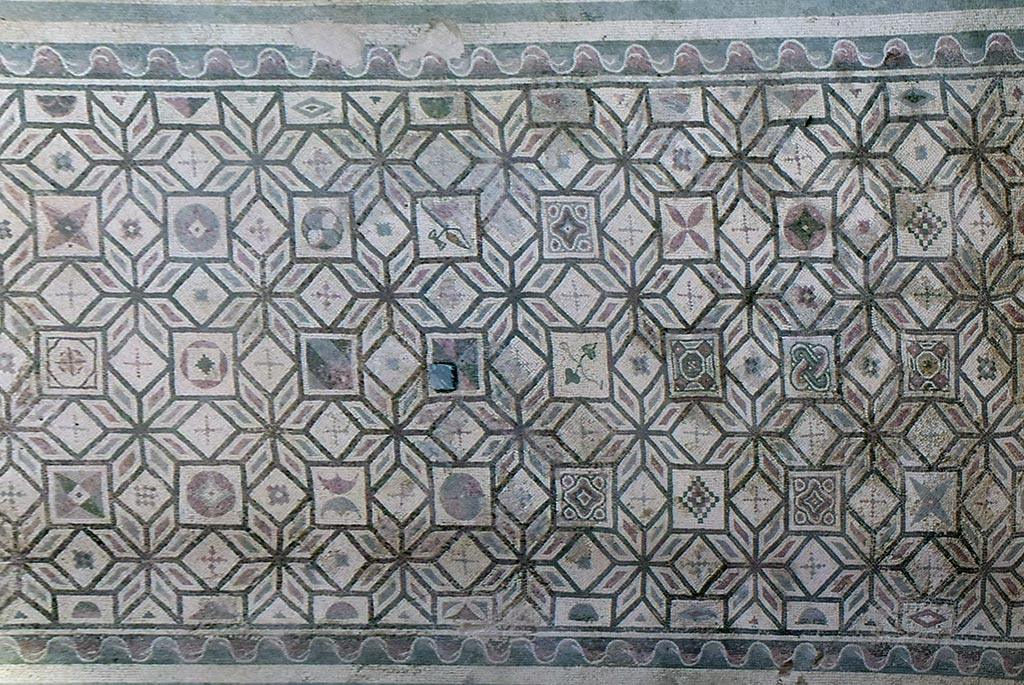
Room 9
Geometric mosaic
The panel is made up of star-shaped patterns and squares. The squares are decorated with cross-shaped figures, lozenges, pelts, Solomon knot motifs, roses, double axes and palmettes.
Hunting Scenes
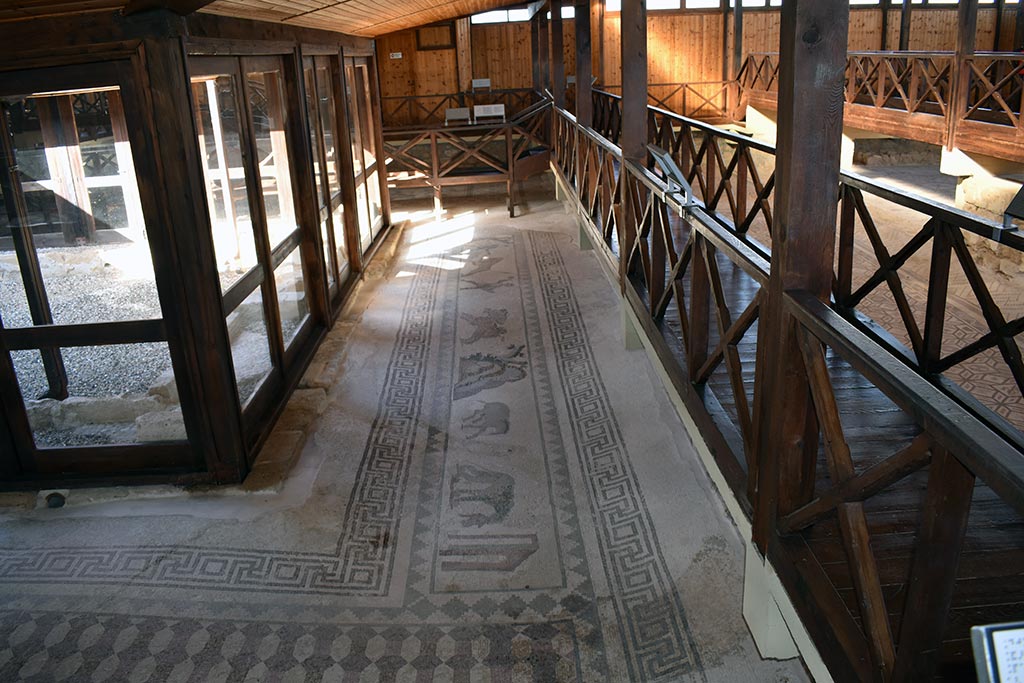
Room 10
Hunting scene mosaic
A hunter is encountering a lion, while another is trying to kill a boar. On the other side of the hillock and onager is depicted with his head cut off, as well as a leopard holding the head of another animal in its mouth.
Page 4 of 7


Related Blogs:
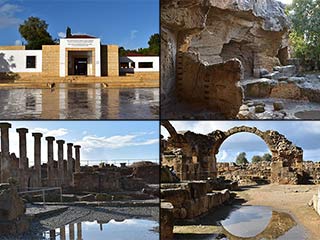
Paphos Archaeological Park - Summary
We first blogged about the Archaeological Park a couple of years ago. It was a short blog, and focused mainly on the pretty spring flowers. Now we are returning, to give the rest of the park the attention it so richly deserves.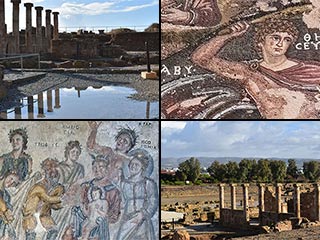
The Houses of Aion and Theseus
It's time now to start our detailled look at the Archaeological Park, so let's begin at the beginning. Once you enter the Archaeological Park, if you keep left, the first sites you will arrive at the The Houses of Theseus and Aion. Let's take a look at their mosaics and other attractions...Good Pages To Visit
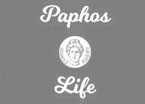
FB PagePaphos Life on Facebook
Like us on Facebook and stay notified of new blog posts.

FB PageOur Facebook Chat Group
Paphos Chat has been created for people who like our site and want to chat using Facebook. You can also easily upload photos of any size here. A lot of people are members of the Facebook chat group and the main forum. It's entirely up to you.
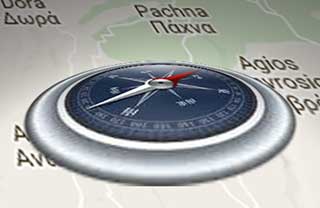
ListBlog Locations
Planning a day out? Then use our map of blog locations as a handy guide. Some of the places we visit our closer to each other than you might think, so take a look and start planning your next adventure...

eBookCyprus Road Trip 01: the Kathikas - Panagia Loop
Let me take you on a journey around the region of Paphos, Cyprus. Starting at Paphos itself, we travel to Akoursos, then Kathikas, Kritou Terra and Simou. We continue past Lasa and Kannaviou, before taking in the delights of Panagia. Getting a bit more adventurous, we visit the abandoned villages of Statos and Agios Fotios, before passing through Choulou, Letymbou and Polemi, and rejoining the main Paphos - Polis road.
The route is suitable for all types of vehicle, and requires no off-roading. The guide contains about 130 photographs including shots of all the road signs you need to pay attention to, as well as some of the highlights you may experience along the way.
There are also several maps which will help you keep your bearings.
You can do this journey in a day, or you can break it up into chunks. You can also do it in reverse, to get some completely different views. It is entirely up to you.
